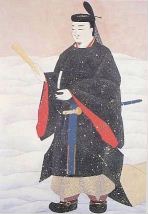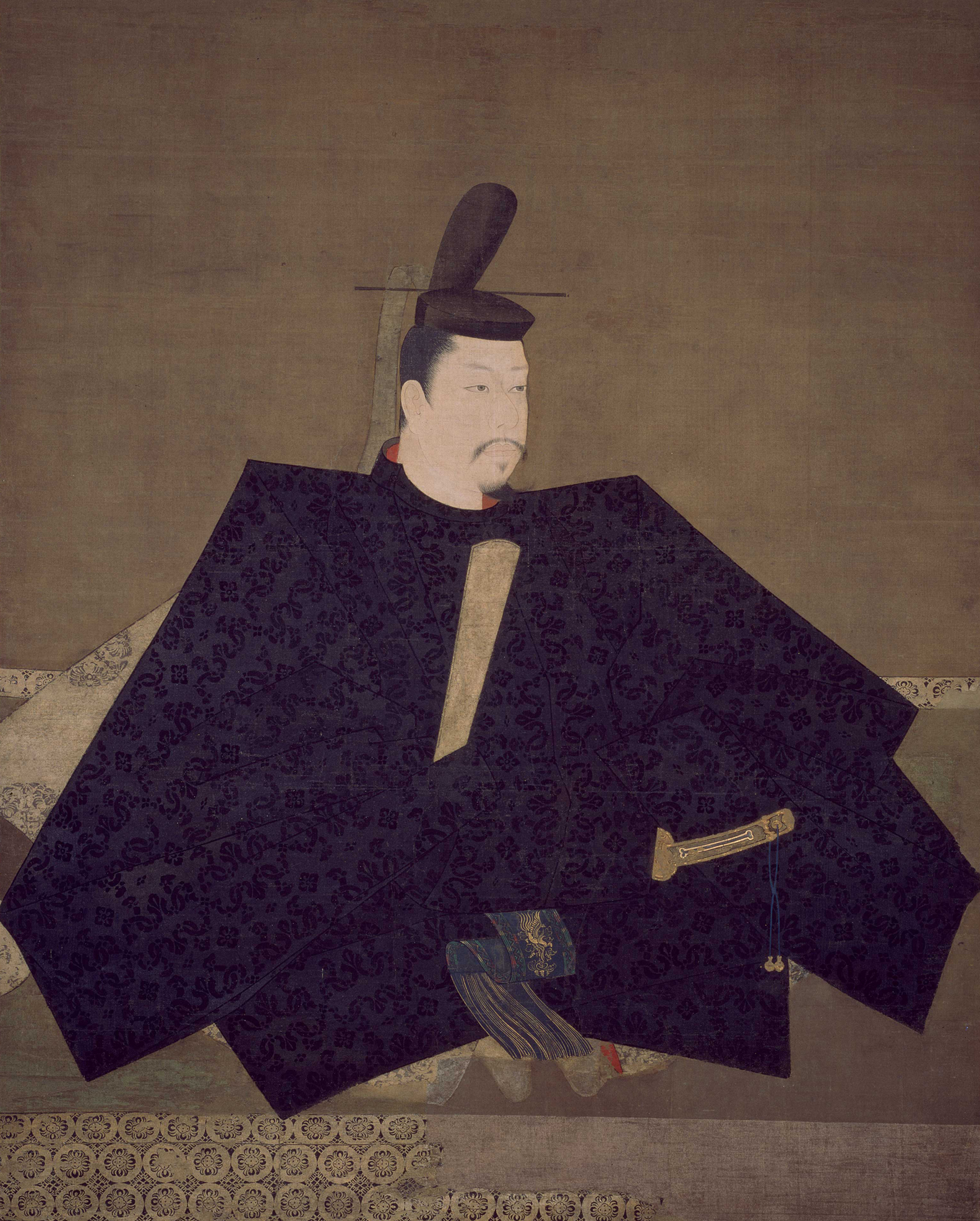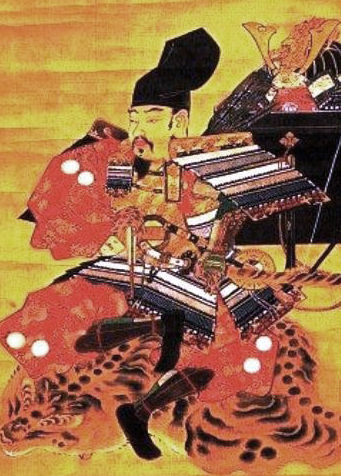|
Kamakura Period
The is a period of History of Japan, Japanese history that marks the governance by the Kamakura shogunate, officially established in 1192 in Kamakura, Kanagawa, Kamakura by the first ''shōgun'' Minamoto no Yoritomo after the conclusion of the Genpei War, which saw the struggle between the Taira clan, Taira and Minamoto clan, Minamoto clans. The period is known for the emergence of the samurai, the warrior caste, and for the establishment of feudalism in Japan. There are various theories as to the year in which the Kamakura period and Kamakura shogunate began. In the past, the most popular theory was that the year was 1192, when Minamoto no Yoritomo was appointed . Later, the prevailing theory was that the year was 1185, when Yoritomo established the , which controlled military and police power in various regions, and the , which was in charge of tax collection and land administration. Japanese history textbooks as of 2016 do not specify a specific year for the beginning of the K ... [...More Info...] [...Related Items...] OR: [Wikipedia] [Google] [Baidu] |
Minamoto No Yoritomo
was the founder and the first shogun of the Kamakura shogunate, ruling from 1192 until 1199, also the first ruling shogun in the history of Japan.Nussbaum, Louis-Frédéric. (2005). "Minamoto no Yoriie" in . He was the husband of Hōjō Masako who acted as regent (''shikken'') after his death. Yoritomo was the son of Minamoto no Yoshitomo and belonged to Seiwa Genji's prestigious Kawachi Genji family. After successfully maneuvering himself to the position of rightful heir of the Minamoto clan, he led his clan against the Taira clan, Taira from his capital in Kamakura, beginning the Genpei War in 1180. After five years of civil war, the Minamoto clan finally defeated the Taira in the Battle of Dan-no-ura in 1185. Yoritomo established the supremacy of the samurai caste and the first shogunate (''bakufu'') which was to be centered around Kamakura, thus beginning the History of Japan#Feudal Japan, feudal age in Japan, which lasted until the 17th century. Early life Yoritomo was t ... [...More Info...] [...Related Items...] OR: [Wikipedia] [Google] [Baidu] |
Northern Court
The , also known as the Ashikaga Pretenders or Northern Pretenders, were a set of six pretenders to the throne of Japan during the Nanboku-chō period from 1336 through 1392. Even though the present Imperial House of Japan is descended from the Northern Court emperors, The Southern Court is considered the legitimate line, with the argument being that it was the Southern court which possessed the Imperial Regalia, which was later handed over to the Northern court, thus making Emperor Go-Komatsu the 100th Emperor of Japan. It was in 1911 that Emperor Meiji passed an edict which made the Southern line the legitimate one. Earlier, it was thought by pre Meiji scholars that It was the Northern line which was the legitimate line. The Northern dynasty is also referred to as the "senior line" or the ; Jimyō-in was a temple and retirement residence of this line's emperors Go-Fukakusa and Fushimi. Nanboku-chō overview The origins of the Northern Court go back to Emperor Go-Sag ... [...More Info...] [...Related Items...] OR: [Wikipedia] [Google] [Baidu] |
Fujiwara Clan
The was a powerful family of imperial regents in Japan, descending from the Nakatomi clan and, as legend held, through them their ancestral god Ame-no-Koyane. The Fujiwara prospered since ancient times and dominated the imperial court until the Meiji Restoration in 1868. They held the title of Ason. The abbreviated form is . The 8th century clan history states the following at the biography of the clan's patriarch, Fujiwara no Kamatari (614–669): "Kamatari, the Inner Palace Minister who was also called ‘Chūrō'',''’ was a man of the Takechi district of Yamato Province. His forebears descended from Ame no Koyane no Mikoto; for generations they had administered the rites for Heaven and Earth, harmonizing the space between men and the gods. Therefore, it was ordered their clan was to be called Ōnakatomi" The clan originated when the founder, Nakatomi no Kamatari (614–669) of the Nakatomi clan, was rewarded by Emperor Tenji with the honorific "Fujiwara"after the w ... [...More Info...] [...Related Items...] OR: [Wikipedia] [Google] [Baidu] |
Emperor Go-Toba
was the 82nd emperor of Japan, according to the traditional order of succession. His reign spanned the years from 1183 through 1198. This 12th-century sovereign was named after Emperor Toba, and ''go-'' (後), translates literally as "later"; and thus, he is sometimes called the "Later Emperor Toba". The Japanese word ''go'' has also been translated to mean the "second one"; and in some older sources, this emperor may be identified as "Toba the Second" or as "Toba II". Genealogy Before his ascension to the Chrysanthemum Throne, his personal name (his ''imina'') was . He was also known as Takanari''-shinnō'' He was the fourth son of Emperor Takakura, and thus grandson of Emperor Go-Shirakawa. His mother was Bōmon ''Shokushi'' (坊門殖子) (Empress Dowager Shichijō-in, 七条院), daughter of Bōmon Nobutaka (坊門信隆) of the Fujiwara clan. Consorts and children * Empress (''chūgū''): '' Fujiwara no Ninshi''/Takako (藤原任子) later Gishūmon-in (宜秋門院), ... [...More Info...] [...Related Items...] OR: [Wikipedia] [Google] [Baidu] |
Kamakura
, officially , is a city of Kanagawa Prefecture in Japan. It is located in the Kanto region on the island of Honshu. The city has an estimated population of 172,929 (1 September 2020) and a population density of 4,359 people per km2 over the total area of . Kamakura was designated as a city on 3 November 1939. Kamakura was Japan's '' de facto'' capital when it was the seat of the Kamakura shogunate from 1185 to 1333, established by Minamoto no Yoritomo. It was the first military government in Japan's history. After the downfall of the shogunate, Kamakura saw a temporary decline. However, during the Edo period, it regained popularity as a tourist destination among the townspeople of Edo. Despite suffering significant losses of historical and cultural assets due to the Great Kantō Earthquake in 1923, Kamakura continues to be one of the major tourist attractions in the Kanto region, known for its historical landmarks such as Tsurugaoka Hachimangū and the Great Buddha of Kamaku ... [...More Info...] [...Related Items...] OR: [Wikipedia] [Google] [Baidu] |
Fief
A fief (; ) was a central element in medieval contracts based on feudal law. It consisted of a form of property holding or other rights granted by an overlord to a vassal, who held it in fealty or "in fee" in return for a form of feudal allegiance, services or payments. The fees were often lands, land revenue or revenue-producing real property like a watermill, held in feudal land tenure: these are typically known as fiefs or fiefdoms. However, not only land but anything of value could be held in fee, including governmental office, rights of exploitation such as hunting, fishing or felling trees, monopolies in trade, money rents and tax farms. There never existed a standard feudal system, nor did there exist only one type of fief. Over the ages, depending on the region, there was a broad variety of customs using the same basic legal principles in many variations. Terminology In ancient Rome, a " benefice" (from the Latin noun , meaning "benefit") was a gift of land () f ... [...More Info...] [...Related Items...] OR: [Wikipedia] [Google] [Baidu] |
Ancient Provinces Of Japan Ryoseikoku Map
Ancient history is a time period from the History of writing, beginning of writing and recorded human history through late antiquity. The span of recorded history is roughly 5,000 years, beginning with the development of Sumerian language, Sumerian cuneiform script. Ancient history covers all continents inhabited by humans in the period 3000 BCAD 500, ending with the Early Muslim conquests, expansion of Islam in late antiquity. The three-age system periodises ancient history into the Stone Age, the Bronze Age, and the Iron Age, with recorded history generally considered to begin with the Bronze Age. The start and end of the three ages vary between world regions. In many regions the Bronze Age is generally considered to begin a few centuries prior to 3000 BC, while the end of the Iron Age varies from the early first millennium BC in some regions to the late first millennium AD in others. During the time period of ancient history, the world population was Exponential growth, e ... [...More Info...] [...Related Items...] OR: [Wikipedia] [Google] [Baidu] |
Muromachi Period
The , also known as the , is a division of Japanese history running from approximately 1336 to 1573. The period marks the governance of the Muromachi or Ashikaga shogunate ( or ), which was officially established in 1338 by the first Muromachi ''shōgun'', Ashikaga Takauji, two years after the brief Kenmu Restoration (1333–1336) of imperial rule was brought to a close. The period ended in 1573 when the 15th and last shogun of this line, Ashikaga Yoshiaki, was driven out of the capital in Kyoto by Oda Nobunaga. From a cultural perspective, the period can be divided into the Kitayama and Higashiyama cultures (later 15th – early 16th centuries). The early years from 1336 to 1392 of the Muromachi period are known as the or Northern and Southern Court period. This period is marked by the continued resistance of the supporters of Emperor Go-Daigo, the emperor behind the Kenmu Restoration. The Sengoku period or Warring States period, which begins in 1465, largely overlaps ... [...More Info...] [...Related Items...] OR: [Wikipedia] [Google] [Baidu] |
Nitta Yoshisada
also known as Minamoto no Yoshisada was a samurai lord of the Nanboku-chō period Japan. He was the head of the Nitta clan in the early fourteenth century, and supported the Southern Court of Emperor Go-Daigo in the Nanboku-chō period. He famously marched on Kamakura, besieging and capturing it from the Hōjō clan in 1333. Later, he fought the Ashikaga brothers on the Emperor's behalf in a see-saw campaign which saw the capital change hands several times. After a peaceful compromise was agreed, Yoshisada was entrusted with two royal princes. At the siege of Kanegasaki (1337), both princes were killed, along with Yoshisada's son, although Yoshisada was able to escape. He committed seppuku when his horse was killed at the siege of Kuromaru. Early life Yoshisada was born in 1301, the eldest son of Nitta Tomouji. He succeeded his father and became the lord of Nitta Manor in Kōzuke Province in 1317. At this time, he also became the head of the Nitta clan. Yoshisada courted a da ... [...More Info...] [...Related Items...] OR: [Wikipedia] [Google] [Baidu] |
Ashikaga Takauji
also known as Minamoto no Takauji was the founder and first ''shōgun'' of the Ashikaga shogunate."Ashikaga Takauji" in ''Encyclopædia Britannica, The New Encyclopædia Britannica''. Chicago: Encyclopædia Britannica Inc., 15th edn., 1992, Vol. 1, p. 625. His rule began in 1338, beginning the Muromachi period of Japan, and ended with his death in 1358. He was a male-line descendant of the samurai of the (Minamoto) Seiwa Genji line (meaning they were descendants of Emperor Seiwa) who had settled in the Ashikaga area of Shimotsuke Province, in present-day Tochigi Prefecture. According to Zen master and intellectual Musō Soseki, who enjoyed his favor and collaborated with him, Takauji had three qualities. First, he kept his cool in battle and was not afraid of death.Matsuo (1997:105) Second, he was merciful and tolerant. Third, he was very generous with those below him. Life His childhood name was Matagorō (又太郎). Takauji was a general of the Kamakura shogunate sent to Kyo ... [...More Info...] [...Related Items...] OR: [Wikipedia] [Google] [Baidu] |
Kenmu Restoration
The was a three-year period of Imperial rule in Japanese history between the Kamakura period and the Muromachi period from 1333 to 1336. The Kenmu Restoration was an effort made by Emperor Go-Daigo to overthrow the ruling Kamakura Shogunate (''de facto'' ruled by Hōjō clan) and restore the Imperial House to power in Japan, returning to civilian government after 148 years of '' de facto'' military government from Kamakura.Sansom 1977: 22-42. Go-Daigo launched the Genkō War in 1331 against the Kamakura Shogunate but was defeated and forced to exile to the Oki Islands. Go-Daigo launched a second uprising, and with the assistance of the defected Kamakura general Ashikaga Takauji and rebel leader Nitta Yoshisada, defeated the Kamakura Shogunate at the siege of Kamakura in 1333. The Imperial House was restored to power but Go-Daigo's policies failed to satisfy his major ''samurai'' supporters and most Japanese people. The Kenmu Restoration was ultimately overthrown when Taka ... [...More Info...] [...Related Items...] OR: [Wikipedia] [Google] [Baidu] |







